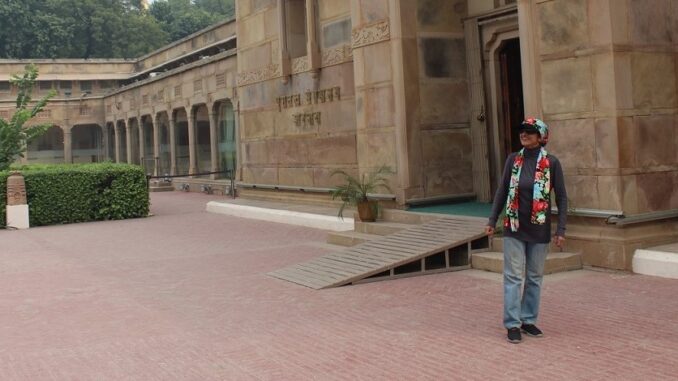
Ganga walks are my medium to explore the landscape of Ganga extensively. And to say thank you to the sacred river for keeping me in her divine embrace.
My two weeks trip to Varanasi and Murshidabad in Nov-Dec 2023 was aimed at achieving two main objectives, along with multiple other walks that included exploring Ganga ghats and museums to grasp the cultural and historical landscape of Ganga.
Two main objectives: A remote walk to find out the spot where sacred Ganga bifurcates in Murshidabad, West Bengal. And, a night walk to experience the spectacle of Dev Deepawali at Varanasi Ganga Ghats in Uttar Pradesh.
In this post I am summing up my museums exploring.
VARANASI MUSEUMS
Sarnath: A walk to the Buddha land. This included museum, archeological site and other Buddha temples. Lord Buddha preached his first sermon at Sarnath after attaining enlightenment. The very first Sangh was also founded here with sixty one monks including Lord Buddha and his five erstwhile companions. The site contains a stupa and the famous lion capital memorial pillar, which was erected by the Mauryan emperor Ashoka and is now the state emblem of India. The antiquities recovered from Sarnath have been preserved in the adjoining site museum maintained by the Archaeological Survey of India.
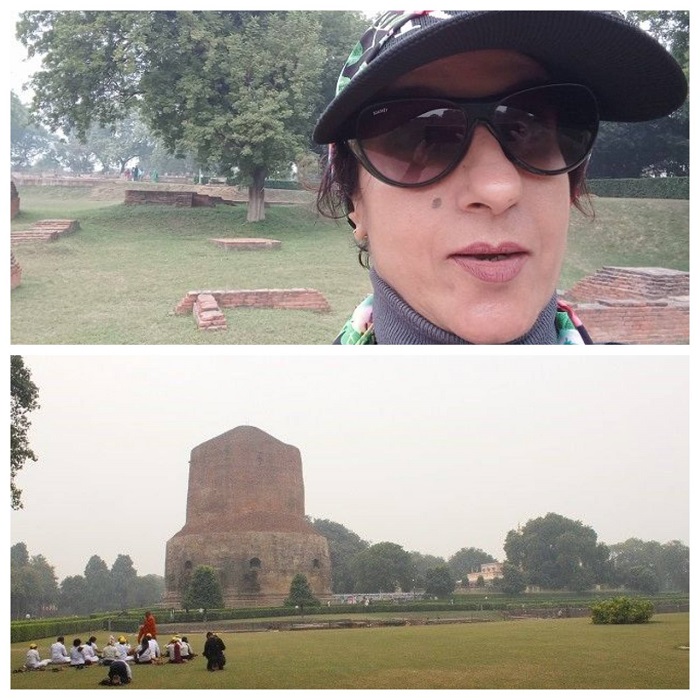
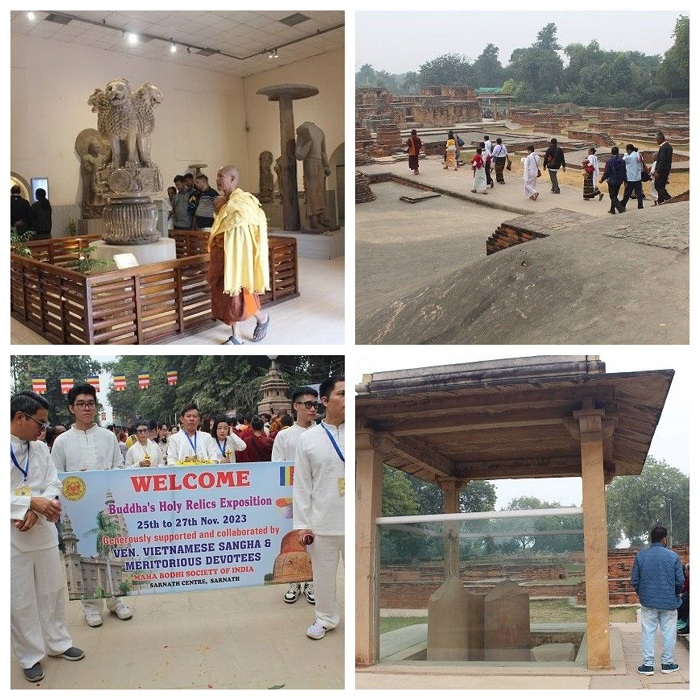
Ramnagar: A walk to the fort. On the eastern bank of Ganga in Varanasi, Ramnagar Fort is a fascinating sandstone structure. The fort was constructed by Maharaja Balwant Singh in 1750. Fort museum has rare collection of American vintage cars, bejeweled sedan chairs, ivory work, medieval costumes, gold and silver brocaded royal palanquins, elephant saddles carved out of silver, jewellery items, costumes made of finest silk, ornate hookas, daggers, portraits of Maharajas, musical instruments. An impressive armoury hall. A rare astronomical clock which not only shows the time but also the year, month, week and day, along with the astronomical details of planets. Museum also houses many manuscripts.
Ganga looks fabulous from the fort. Ganga view and Ganga ghat can be accessed through a tunnel there, as I did.

Another walk in Ramnagar, through the narrow lanes to the ancestral home of Shastriji. Lal Bahadur Shastri Smriti Bhawan Sangrahalay at Ramnagar is dedicated to Late Shri Lal Bahadur Shastri, the 2nd Prime Minister of India. The lifestyle of Shastriji is well portrayed by maintaining the house with an appearance similar to his time. At the entrance, an image of Shastriji is displayed followed by his life history and the timeline in the first hall as one enters. The whole setting is easily relatable to the period he lived there. It is an interesting residential personalia museum.

BHU: Banaras Hindu University walk happened in university campus and a visit to Bharat Kala Bhawan. With an impressive collection of around one lac artefacts, this university museum has been instrumental in the dissemination of knowledge on Indian art and culture. It took more than two hours for me to visit each section of the museum. I spent maximum time in the gallery dedicated to Mahamana Pt Madan Mohan Malviya. Bharat Kala Bhawan is considered as one of the best university museums in India.
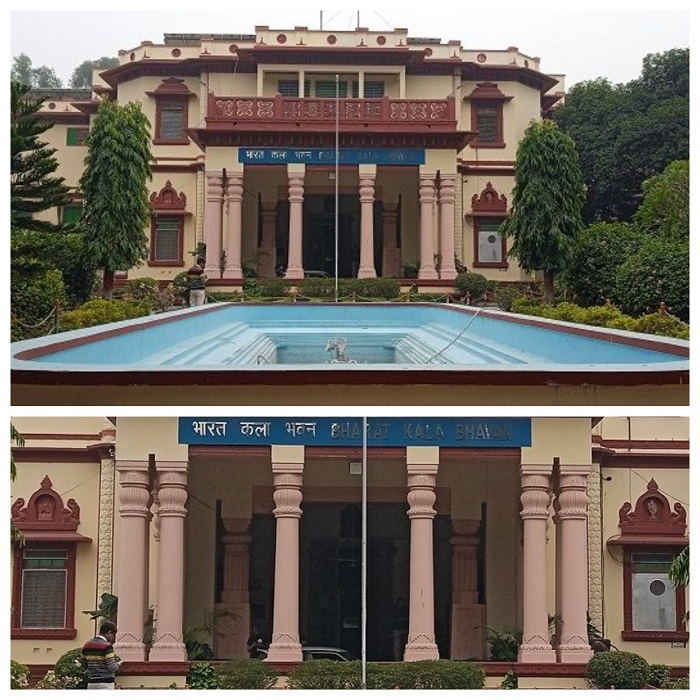
MURSHIDABAD MUSEUMS
Lal Bagh: A walk to Hazarduari palace museum. The Hazarduari palace is located on the eastern bank of Bhagirathi. Hazarduari means one thousand doors. In this palace 900 doors are believed to be real and 100 doors are illusive. It was built in 19th century by architect Duncan Macleod under the reign of Nawab Nazim Humayun Jah. The collection of antiquities include weapons, oil paintings of Dutch, French and Italian artists, metal objects, marble, porcelain and stucco statues, farmans, rare books, old maps, manuscripts, land revenue records, palanquins mostly belonging to eighteenth and nineteenth centuries. The royal exhibits of the museum left me spellbound.
The Nizamat imambara in the palace campus is a Shia Muslim congregation hall. The present imambara was built in 1847 by Nawab Mansur Ali Khan after the old imambara built by Nawab Sirajud Daulah was destroyed in fire. This imambara is the largest one in Bengal.

Rajbari: Walks to rajbari museums. Rajbari means a royal mansion.
A walk to Nasirpur rajbari which is a replica of Hazarduary palace of Lal Bagh. Local people call it chhoti Hazarduari. Nasirpur rajbari used to be the court of Debi Singha, known for being a strict tax authority. This property has been converted into museum showcasing personal belongings of the Nashirpur royal family such as farmans, legal documents pertaining to tax collection of that time and many other significant exhibits. The inner quadrangle of the palace has a thakurbari with images of deities. Thakurbari means an abode of God.
A walk to the Jagat Seth museum. Jagat Seth was the title for the powerful moneylender family who looked after the mint and treasury accounts of Bengal during the Nawabs era. This museum contains personal possessions of Jagat Seth family including coins of the bygone era, muslin and other extravagant attires. House has a underground tunnel and an underground chamber as well which were used for secretive purpose.
A walk to Dhulian rajbari. This property is not open to public, presently, but an annual festival was being celebrated there so I walked to that place and relished few delicacies.
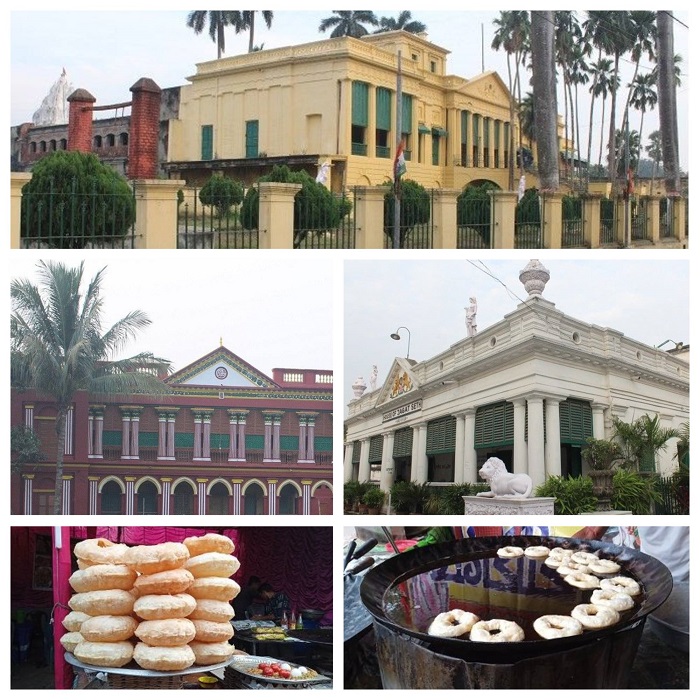
Kathgola: A walk to an ornate multi storey mansion adorned with picturesque gardens. Belonging to the Dugars, the Marwari Jains, this palace is a perfect blend of art and architecture. There is one majestically carved Jain temple and a zoo as well. The palace has been converted to a museum and showcases magnificent chandeliers, mirrors, furniture and many other personal belongings of the owners.

Except Sarnath museum and Shastriji Sangrahalaya, photography is not allowed inside other museums that I visited.

This is a wonderful place. Thank you for always sharing with us your travel experience. Always look forward to your next posts.
Thank you.
Love this so much. And I love the architecture of all the buildings! What a magical experience.
Indeed a magical experience.
I do enjoy visiting museums all around the world. Such a wonderful way to follow histories and cultures.
Truly so.
These pictures are so beautiful. I’d love to travel the world and take pictures of all the wonderous architecture I discover. Thanks for sharing!
Thanks Lavanda.
I am sure it must be an amazing experience visiting all these lovely places.
Absolutely so.
I always love reading your posts. You visit the most wonderful places!
Thank you Beth.
oh wow, the place looks amazing…There is a ton of places to explore, thank you so much for bringing us along this amazing journey, love it.
Glad you enjoyed.
You are so right saying that you are connecting with the local people, cultures, traditions. It is a truly powerful feeling.
Truly a powerful feeling in connecting.
What an amazing place to visit, I have always had an interest on different cultures and do love your posts
Thank you Samantha.
Exploring the Ganga landscape through your walks sounds like a profound and enriching experience! Your gratitude towards the sacred river is beautifully expressed. The museums you’ve visited during your Varanasi and Murshidabad trip add a fascinating historical layer to your journey. Sarnath, with its rich connection to Lord Buddha’s teachings, seems especially captivating. Looking forward to more insights from your travels!
Profound experience indeed.
The architecture is amazing and looks really cool to walk through…very interesting trip it seems and a fun festival too!
Amazing historical buildings.
Wow! There are so many great walks along the Ganges river. I would be in awe of visiting all of this great places.
Feel blessed to be able to do so.
Ganga is truly such a beauty. I wish to visit someday!
For me Ganga is a divine entity.